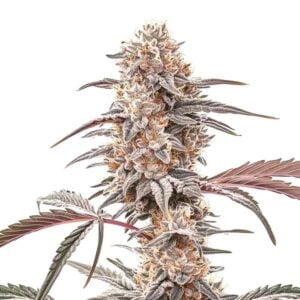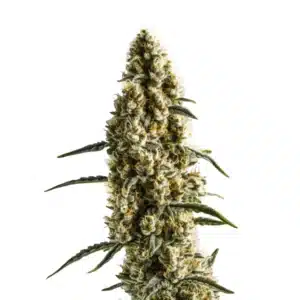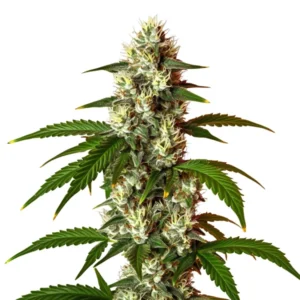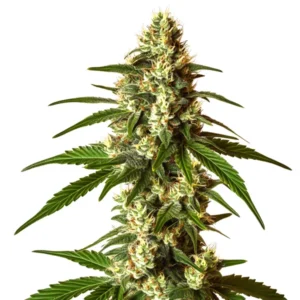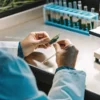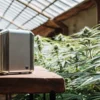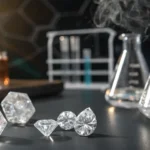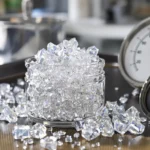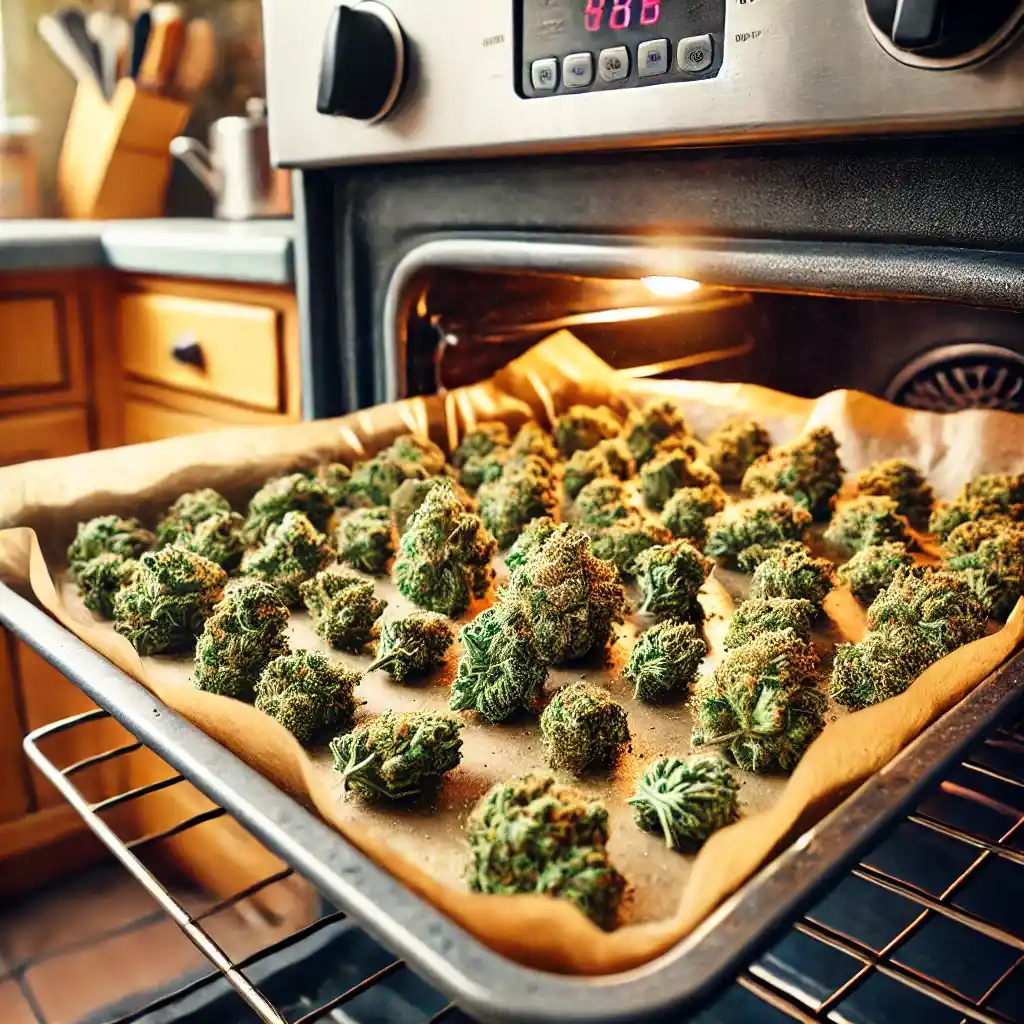
Decarboxylation in Oven: Decarboxylation Chart
A decarbing weed temp chart is a helpful guide that shows the ideal temperature and time ranges for activating THC while maintaining quality. A basic decarb temperature chart for weed recommends using 220°F to 240°F (104°C–115°C) for 30–45 minutes for a good balance of potency and flavor, or 240°F to 250°F (115°C–121°C) for 25–40 minutes for a faster but potentially less flavorful result. Lower temperatures (around 220°F) preserve more terpenes for better flavor, while higher temperatures decarb faster but can degrade some of the aromatic compounds.
To experience the psychoactive effects or relaxation, these compounds must be converted into their active forms: THC and CBD. Decarboxylation achieves this by removing a carboxyl group from the cannabinoids, making them ready for your body to use.
Recommended Strains
Biscotti
|
|
THC | 25% - 30% (High) |
|
|
Type | Feminized |
|
|
Yield | Medium |
|
|
Phenotype | 80% Indica / 20% Sativa |
Biscotti Mintz
|
|
THC | 22% - 25% (Medium) |
|
|
Type | Feminized |
|
|
Yield | High |
|
|
Phenotype | 80% Indica / 20% Sativa |
For a detailed decarboxylation chart that outlines the ideal temperatures and times for different cannabis types, be sure to consult reliable sources to ensure you achieve the best possible results.
For those interested in making cannabis-infused butter, this process is particularly important. Once you’ve decarboxylated your cannabis, you can explore various weed butter recipes to incorporate cannabis into your cooking and enjoy its full effects in a tasty and potent form.
The importance Decarboxylation in Oven
Wondering why it’s crucial to decarb your weed if you want to smoke or vape it? The truth is, while smoking or vaping does decarb your weed, it isn’t very efficient. This process results in the loss of some cannabinoids, preventing you from experiencing the full benefits of your cannabis.
Promos & Deals
Why is decarboxylation in a Oven essential for other method of cannabis consumption?
Decarbing weed is also essential when you don’t plan on smoking or vaping it. There are numerous ways to consume weed, including making edibles like gummies, brownies, cakes, butter, tinctures, oils, and more. For all these methods, decarbing your weed beforehand is crucial. Failing to do so results in a weak or ineffective product.
4 Reason For Decarb Your Weed
- Increases Potency: Activates cannabinoids like THC and CBD, making your cannabis more potent.
- Enhances Flavor and Aroma: Releases terpenes, the aromatic compounds that give weed its characteristic smell and taste.
- Versatility in Use: Allows for various consumption methods such as smoking, vaping, or making edibles.
- Improves Health Benefits: Provides the effects and benefits of cannabis, including euphoria, relaxation, pain relief, anti-inflammation, anti-anxiety, mood enhancement, and more.
Chemical Principles of Decarboxylation
Decarboxylation is a crucial chemical transformation that unlocks the psychoactive and therapeutic potentials of cannabis. This process involves a two-step reaction, essential for converting cannabinoids like THCA into their active forms.
Initially, heating the cannabis in the oven breaks the hydrogen bonds in its acidic cannabinoids, forming a beta-keto acid intermediate. This intermediate then reconfigures, releasing a CO2 molecule and creating the neutral, active form of the cannabinoid, such as THC. Properly applying heat accelerates this transformation, making decarboxylation in the oven a key step for maximizing cannabis’s benefits.
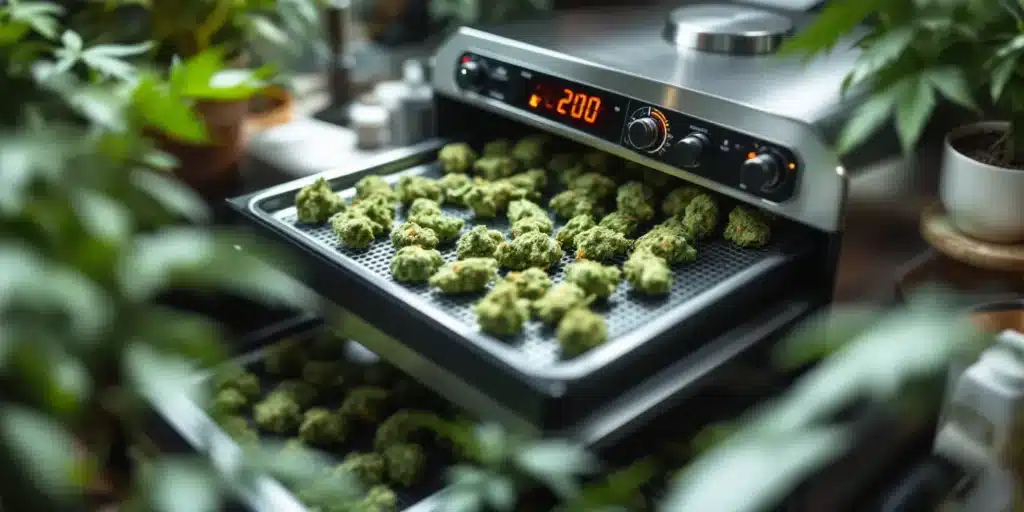
Factors Affecting the Decarboxylation in a Oven Process
Several factors influence the efficiency and effectiveness of decarboxylation, each playing a vital role in optimizing the activation of cannabinoids. These factors can enhance the quality of cannabis-infused products:
- Temperature: The oven’s heat must be sufficient to initiate the chemical reaction without degrading the cannabinoids. Maintaining a delicate balance is crucial, as excessive temperatures can evaporate terpenes and cannabinoids, reducing both efficacy and flavor.
- Time: The duration of heat application is critical. Insufficient time will not fully activate the cannabinoids, while excessive time can lead to their degradation. Finding the optimal time is essential for ensuring maximum potency without compromising quality.
- Atmosphere: The environment in which decarboxylation occurs impacts the outcome. Minimizing oxygen exposure is important to prevent oxidation, which can degrade THC over time. A controlled atmosphere preserves the integrity of cannabinoids and terpenes.
By mastering these factors and utilizing a decarboxylation chart, you can ensure a consistent and high-quality activation of cannabinoids, unveiling the full potential of cannabis.
Select The Right Cannabis Strain for Decarboxylation
Proper preparation is essential for successful decarboxylation in an oven, setting the stage for the optimal conversion of cannabinoids into their active forms. Here’s how to get started, with a focus on selecting the right type of raw cannabis:
Strain Selection: Choose cannabis strains based on the desired effects, whether for relaxation, energy, or medical purposes. The cannabinoid profile (THC, CBD, etc.) will guide your selection.
Quality Matters: Opt for high-quality, well-cured cannabis to ensure better taste and more effective decarboxylation. Avoid moldy or poorly cured buds, which can affect the final product’s quality and safety.
Plant Material: Both flower and trim can be decarboxylated in an oven, though the potency will vary. Flowers generally offer higher cannabinoid concentrations, while trim can yield satisfactory results for edibles and extracts.
By carefully selecting the right cannabis, you can significantly enhance the effectiveness and enjoyment of your edibles and extracts, ensuring a potent and desired outcome. For more detailed guidance, refer to a decarboxylation chart to ensure precise temperature and timing.
Equipment for decarboxylation cannabis
Before starting the decarboxylation process, gathering the right equipment and materials is essential to ensure everything goes smoothly. Here’s a list of what you’ll need:
Oven: The central tool for decarboxylation, where controlled heat is applied to the cannabis. A reliable oven that accurately maintains the set temperature is crucial for effective decarboxylation in the oven.
Baking Sheet: A flat surface on which to spread your cannabis evenly. This ensures uniform heat exposure during the decarboxylation process.
Parchment Paper: Lining your baking sheet with parchment paper prevents the cannabis from sticking to the pan and facilitates easy cleanup. It also helps distribute the heat more evenly, essential for consistent decarboxylation.
Grinder: Grinding your cannabis before decarboxylation increases the surface area exposed to heat, promoting more uniform and efficient activation of cannabinoids, as illustrated in many decarboxylation charts.
With these items prepared, you’re set to begin the decarboxylation process, taking the first step toward creating potent and effective cannabis-infused products.

Guide for Decarboxylation in Oven
Follow these steps to decarb weed in the oven before making edibles, tinctures, or cannabis-infused oils:
Step 1: Preheat Oven
Preheat your oven to 250°F (121°C). This temperature is essential for proper decarboxylation without destroying cannabinoids and terpenes.
Step 2: Prepare Cannabis
Break up your cannabis buds into small, pea-sized pieces using your hands or a grinder. Avoid grinding too fine to prevent uneven decarboxylation and difficulty in straining.
Step 3: Line Baking Sheet
Use a baking sheet with raised edges to prevent spillage. Line it with parchment paper to prevent sticking and ensure easy cleanup.
Step 4: Spread Cannabis
Evenly spread the ground cannabis across the parchment-lined baking sheet. Ensure the layer is thin and free of clumps for consistent heating.
Step 5: Bake
Place the baking sheet with cannabis in the oven for approximately 20 minutes. The baking time may vary based on the moisture content of your cannabis. If it’s particularly moist, you may need to extend the time. The cannabis should change from bright green to golden brown.
Step 6: Monitor and Stir
Check the cannabis halfway through the baking process, around 10 minutes. If it has already turned golden brown and dry, remove it. Gently stir to ensure even decarboxylation.
Step 7: Remove from Oven
After 20 minutes, the cannabis should be golden brown. Carefully remove the baking sheet from the oven.
Step 8: Cool
Allow the cannabis to cool completely on the baking sheet. It will be fragile and crumbly, so handle it gently to avoid losing material.
Step 9: Store or Use
Once cooled, you can pulse the decarboxylated cannabis in a food processor to add directly to food or grind it into a fine powder for beverages. Alternatively, use it to make potent cannabutter the traditional way or in a slow cooker for homemade cannabis edibles. Store any unused decarbed weed in an airtight container, away from direct sunlight and heat.
For best results, refer to a decarboxylation chart to ensure precise timing and temperature control, enhancing the potency and effectiveness of your cannabis preparations.
Temperature Chart for Decarboxylation
Decarbing weed is a crucial process that involves applying heat over a specific period. The decarboxylation chart below provides the recommended temperatures and times for activating THCA, CBDA, and CBGA, as per Dr. Adie Rae, a neuroscientist and scientific adviser to Weedmaps. The highlighted sections indicate Dr. Rae’s ideal recommendations for achieving a balanced conversion.
| Cannabinoid | Temperature (ºF) | Temperature (ºC) | Time (in minutes) |
| THCA/THC | 230ºF | 110ºC | 30 |
| 265ºF | 130ºC | 9 | |
| CBDA/CBD | 230ºF | 110ºC | 45 |
| 265ºF | 130ºC | 20 |
How To Use Decarb Weed
Once you have decarboxylated weed, you can use it in several versatile ways:
- Infuse it into Oil or Butter: Infusing decarboxylated weed into oil or butter is a popular method for creating homemade cannabis edibles. This decarboxylation in oven process ensures the THC is activated and ready for culinary use.
- Make Tinctures: Tinctures are alcohol-based cannabis extracts that can be added to drinks or used sublingually (under the tongue). To make a simple tincture, soak decarboxylated weed in high-proof alcohol for several weeks. Check out our decarboxylation chart for precise timing and temperature recommendations.
- Create Topicals: You can infuse decarboxylated weed into oils or creams to make cannabis topicals. These can be applied to your skin for potential localized relief, offering a non-psychoactive method to use cannabis.
- Make Capsules: For a smoke-free and easy dosing option, put decarbed weed directly into capsules. This method is convenient and discreet for those who prefer not to consume cannabis through traditional methods.
When using decarboxylated weed, start with a small amount to gauge its effects. Remember, the potency of decarboxylated weed can be significantly higher and longer-lasting than raw or cured cannabis, so start low and go slow.
For more detailed information, including a decarboxylation chart, visit our comprehensive guide on decarboxylation in oven.
Decarboxylation in a Oven too long?
When performing decarboxylation in the oven, it’s crucial to avoid excessive heating or prolonged exposure. Decarboxylating weed for too long, or at temperatures that are too high, can result in the degradation of cannabinoids and terpenes. This not only diminishes the potency but also affects the overall effectiveness of the weed.
Should weed be ground beforehand?
For optimal results, it’s best to grind weed before placing it in the oven for decarboxylation. Grinding increases the surface area, promoting even decarboxylation and ensuring that all parts of the weed are heated uniformly. If you need to grind weed without a grinder, there are alternative methods like using scissors or a kitchen knife. This ensures that the process remains efficient and consistent, even without specialized tools.
Decarb weed in the microwave?
Decarbing cannabis in a microwave isn’t advisable due to temperature control limitations. The ideal method involves a slow, low heat process, making a conventional oven the preferred choice. Alternatively, a small toaster oven with adjustable temperature settings can also be used effectively.
Conclusions to decarboxylate marijuana correctly
Don’t decarboxylate if you don’t want to get high. Cannabis decarboxylation is essential for consumers aiming to achieve maximum potency and harness the potential therapeutic and psychoactive effects of THC and CBD. If you plan to add cannabis directly to food or drink for a potent high, the following steps will help activate the cannabinoids, ensuring you get the most out of your cannabis. However, low-dose consumers or those new to cannabis can still benefit and avoid a strong psychoactive high by skipping the decarbing step.
There’s no need to decarb weed before smoking or vaping, as the heat involved in either process will naturally convert the cannabinoid acids to cannabinoids.
Achieving the right temperature is crucial to activate as much of the flower’s cannabinoid content as possible without destroying too many terpenes, which can affect smell, taste, and potential entourage effects. Decarbing weed at temperatures higher than 300°F (148.9°C) may cause degradation. spray Terpenes may evaporate, leading to an unsavory smell and flavor.
To ensure precise decarboxylation in the oven, use an accurate oven thermometer to monitor the temperature. This helps maintain the ideal conditions for activating cannabinoids without degrading other valuable compounds.
Grinding your weed to a rough, but not too fine, texture before decarboxylation increases the surface area, ensuring all parts are exposed to heat. This can improve the efficiency of the decarboxylation process, maximizing the activation of cannabinoids.
By following these guidelines, you can effectively decarboxylate cannabis in your oven, optimizing the potency and therapeutic benefits of your cannabis products.


